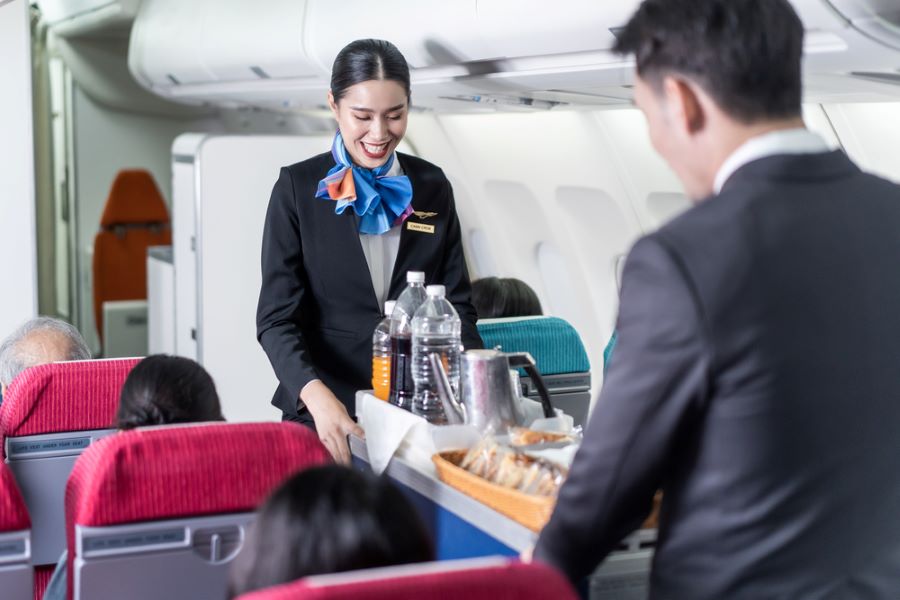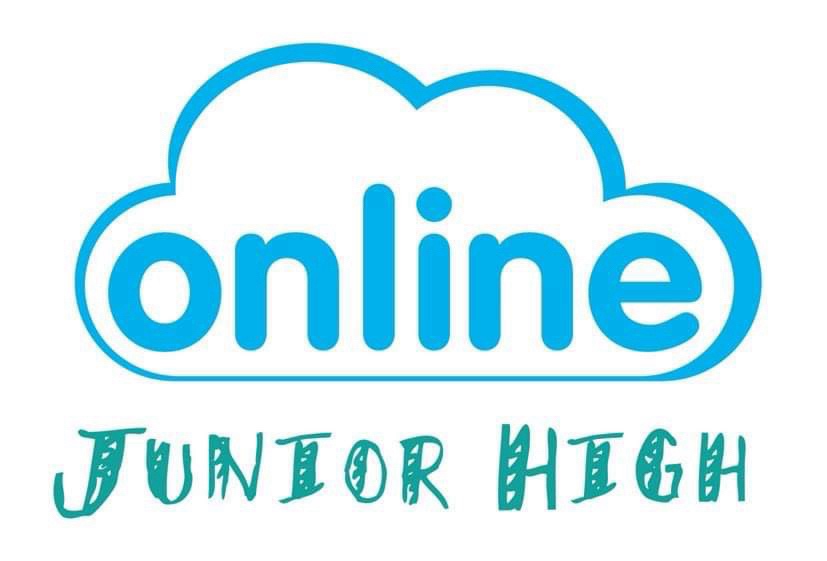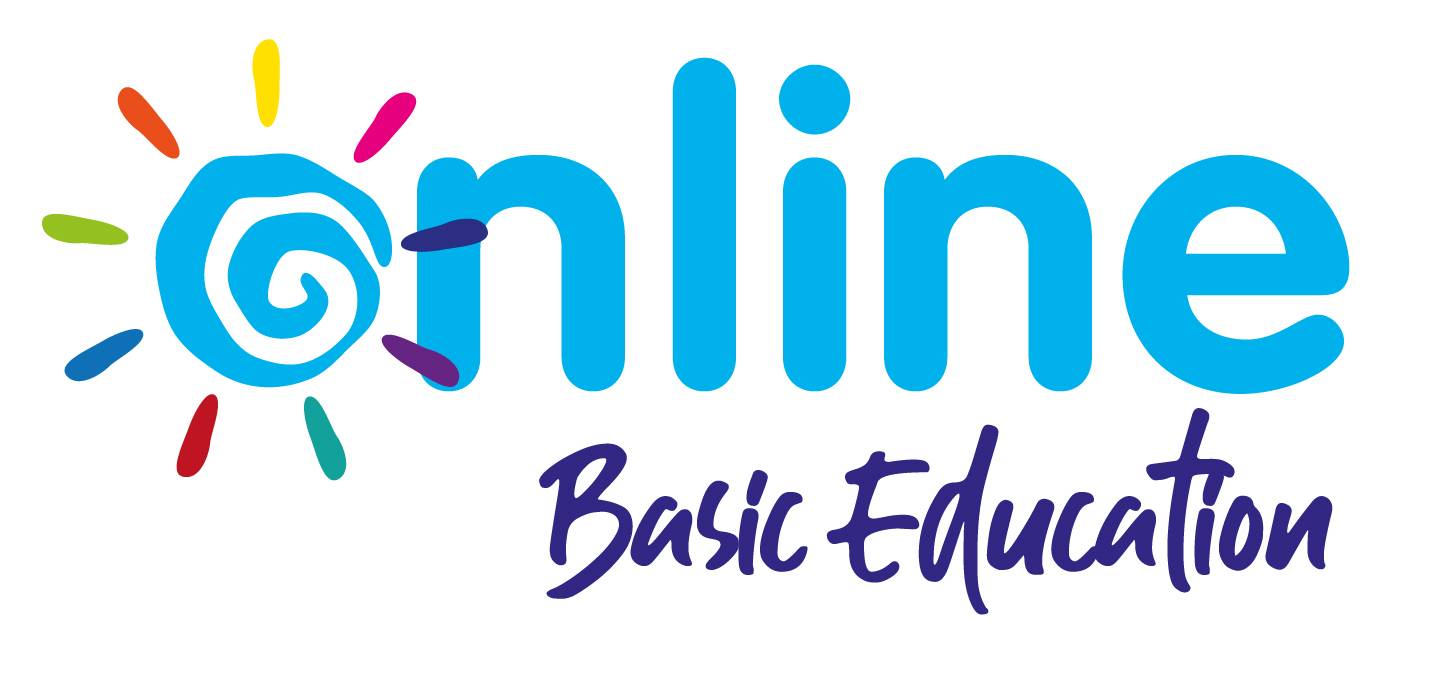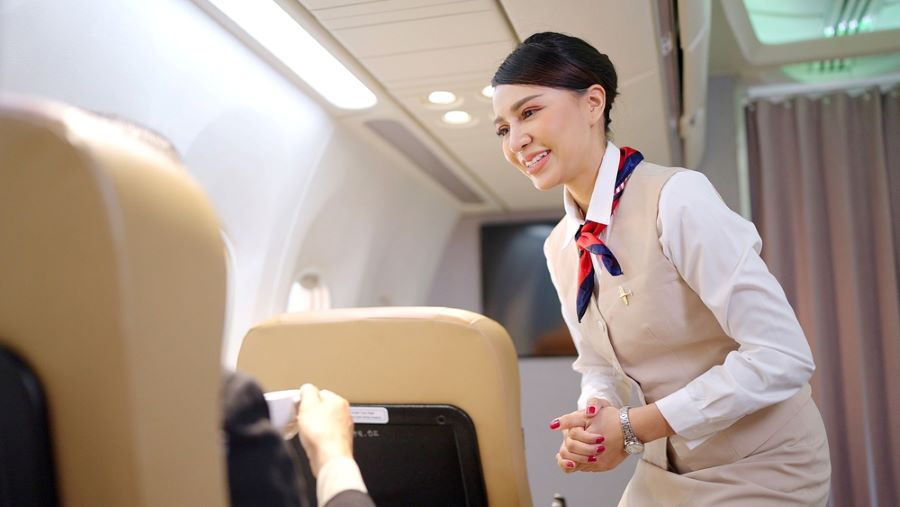If you’re reading this, chances are you’re interested in becoming a flight attendant or have a child that is—a career that’s as exciting as it is challenging. Whether it’s the thrill of traveling to new places, meeting diverse people, or providing top-notch service at 35,000 feet, the role of a flight attendant (FA) is dynamic and rewarding. The first step you need to nail down is to choose the right Senior High School (SHS) strand for FAs. Why? Because the skills and knowledge you gain during these formative years lay the groundwork for your future career. It’s more than just picking subjects that interest you; it’s about building a solid foundation that will support your aspirations.
To add another chapter to our guide to all strands in senior high, we’ll explore which SHS strands align with the skills required for flight attendants, from effective communication to problem-solving and customer service. We’ll also offer tips on making the best choice for your individual goals and provide insights that will help you make a more informed decision.
By the end of this article, you’ll have a clearer idea of which SHS strand can set you on the right track for a career among the clouds. Let’s get started!
Understanding the Role of a Flight Attendant
Flight attendants are responsible for ensuring the safety and comfort of passengers during flights. Their tasks involve much more than serving drinks and snacks; they play a crucial role in the overall flight experience.
Key Responsibilities
- Safety: Conducting safety checks, demonstrating safety equipment, and guiding passengers during emergencies.
- Service: Assisting with luggage, serving meals and drinks, and ensuring passenger comfort.
- Emergency Response: Managing medical incidents, turbulence, and other unexpected situations.
- Communication: Relaying important information between the cockpit and passengers.
Required Skills
- Communication: Flight attendants must clearly explain safety procedures and address passenger concerns.
- Customer Service: They need patience, empathy, and problem-solving skills to deliver excellent customer service.
- Safety Knowledge: Understanding safety protocols and first aid is crucial.
- Teamwork: Flight attendants work closely with their crew and must coordinate effectively.
To excel as a flight attendant, you need a mix of communication skills, customer service expertise, safety awareness, and a strong sense of teamwork. Identifying and understanding these key aspects will guide you in choosing a SHS strand that effectively cultivates these skills.

What Strand in SHS is Right for Aspiring Flight Attendants?
Choosing the right SHS strand can play a significant role in setting the foundation for a successful career as a flight attendant. Here’s an exploration of SHS strands that can help you or your child get their career off the ground.
Humanities and Social Sciences (HUMSS)
The Humanities and Social Sciences (HUMSS) strand is ideal for those who enjoy communication, human interaction, and exploring societal dynamics. This strand emphasizes the development of communication skills and a deeper understanding of people, which are essential traits for flight attendants.
Key Subjects
- Oral Communication: This subject focuses on effective speaking skills, a must for flight attendants when delivering safety instructions and addressing passenger needs.
- English for Academic and Professional Purposes: This course enhances formal communication skills, beneficial for interacting with passengers from different backgrounds.
- Creative Writing: This subject fosters creativity and adaptability, helping flight attendants think on their feet in various situations.
By focusing on communication and social understanding, the HUMSS strand courses equip aspiring flight attendants with the skills to connect with passengers and work effectively as part of a team.
General Academic Strand (GAS)
The General Academic Strand (GAS) offers flexibility, allowing students to choose subjects from different strands. This adaptability is valuable for those who want to develop a customized education combining practical skills with communication expertise.
Key Features
- Customization: GAS allows you to select a mix of subjects from different strands, tailoring your studies to your career interests.
- Balanced Skill Development: The flexibility to combine practical subjects from TVL with communication-focused subjects from HUMSS provides a broad skill set that aligns well with the diverse demands of a flight attendant’s role.
- Exploratory Opportunities: GAS lets you explore various subjects, giving you a wider range of skills and knowledge that can be useful in the aviation industry.
Due to its customizable nature, the GAS strands courses are ideal for students who want a broader educational experience that covers multiple disciplines relevant to becoming a flight attendant.

Accountancy, Business, and Management (ABM)
The Accountancy, Business, and Management (ABM) strand is a solid choice for those interested in the business side of the aviation industry, focusing on business concepts and customer relations. Although this track is often associated with corporate careers, it offers valuable skills for aspiring flight attendants.
Key Subjects
- Business Math and Applied Economics: Understanding business operations and economics can be useful when handling in-flight sales or managing inventory.
- Principles of Marketing: This subject provides insight into customer behavior and marketing strategies, which can enhance customer service skills.
- Organization and Management: This course helps develop organizational skills and teamwork, both essential in the high-pressure environment of an airplane cabin.
With these business-oriented subjects, the ABM strand courses equip aspiring flight attendants with a deeper understanding of business practices, customer relations, and organizational skills, which can be applied in their careers.
How to Choose the Right Strand in SHS for Flight Attendants
Choosing the best SHS strand is an important decision that can shape your future career, especially if you’re aspiring to become an F.A.. Here are some tips to help you find the strand that aligns with your interests, skills, and career goals.
Assess Your Interests and Strengths
Start by identifying what subjects or activities you enjoy most and where you excel. Consider the following questions:
- What subjects do you find most engaging?
- Which skills do you naturally possess? Are you a good communicator? Do you enjoy helping others?
- What type of work environment suits you best?
By answering these questions, you can gain insights into which SHS strand might be the best fit.
Define Your Career Goals
Think about your long-term career aspirations. If you aim to become a flight attendant, consider the key skills and knowledge required for the role. This will help guide you toward the strand that provides the most relevant training and experience.

Seek Guidance from Educators and Professionals
Don’t hesitate to ask for advice from people who can offer valuable insights. Here are some sources of guidance:
- Teachers and Career Counselors: They can help you understand the curriculum of each strand and suggest which might suit your interests and goals.
- Professionals in the Aviation Industry: Connecting with current or former flight attendants can give you a realistic view of the skills and knowledge required in the field.
By gathering different perspectives, you’ll be better equipped to choose the strand that aligns with your career objectives.
Finding the Right School
Once you’ve identified the right SHS strand, the next step is choosing a school that offers the program and has a reputation for quality education. When selecting a school, consider the following factors:
- Curriculum: Does the school offer a comprehensive curriculum that aligns with your chosen strand? You need to ensure it includes the relevant subjects and training.
- Facilities and Resources: Check if the school has the facilities and resources to support your education. For example, do they have training labs or industry partnerships?
- Reputation and Success Rates: Research the school’s reputation and success rates, especially among graduates in your chosen field.
It’s also worth considering online learning in the Philippines, which have become increasingly popular. Online schools offer several benefits, including:
- Flexibility: You can learn at your own pace and manage your schedule, making it easier to balance studies with other commitments.
- Accessibility: Online schools can be attended from anywhere, reducing the need for commuting and providing greater access to education.
- Cost-Effectiveness: Often, online schools are more affordable, with fewer overhead costs for facilities and transportation.
Online education can be a practical option for students who require a flexible learning environment or who live in remote areas. It also allows you to access a broader range of programs and educators, expanding your educational opportunities.
By carefully selecting the right school—whether traditional or online—and aligning your SHS strand with your career goals, you’ll set a strong foundation for your journey to becoming a successful flight attendant.
Get Your Career Soaring
Choosing the right SHS strand is a pivotal step on the journey to becoming a flight attendant. It’s about finding the path that helps you build the skills and knowledge you’ll need in this exciting career. Whether you’re drawn to the communication focus of Humanities and Social Sciences (HUMSS), the flexibility of General Academic Strand (GAS), or the management aspect of ABM, your decision will shape your future in aviation.
If you’re looking for a online senior high school in the Philippines that can help you get started on the right path, consider OEd SHS. We offer a range of SHS strands that are designed to provide a solid foundation for your career goals. With flexible learning options, experienced instructors, and a supportive community, OEd SHS is committed to helping you achieve your dreams.








